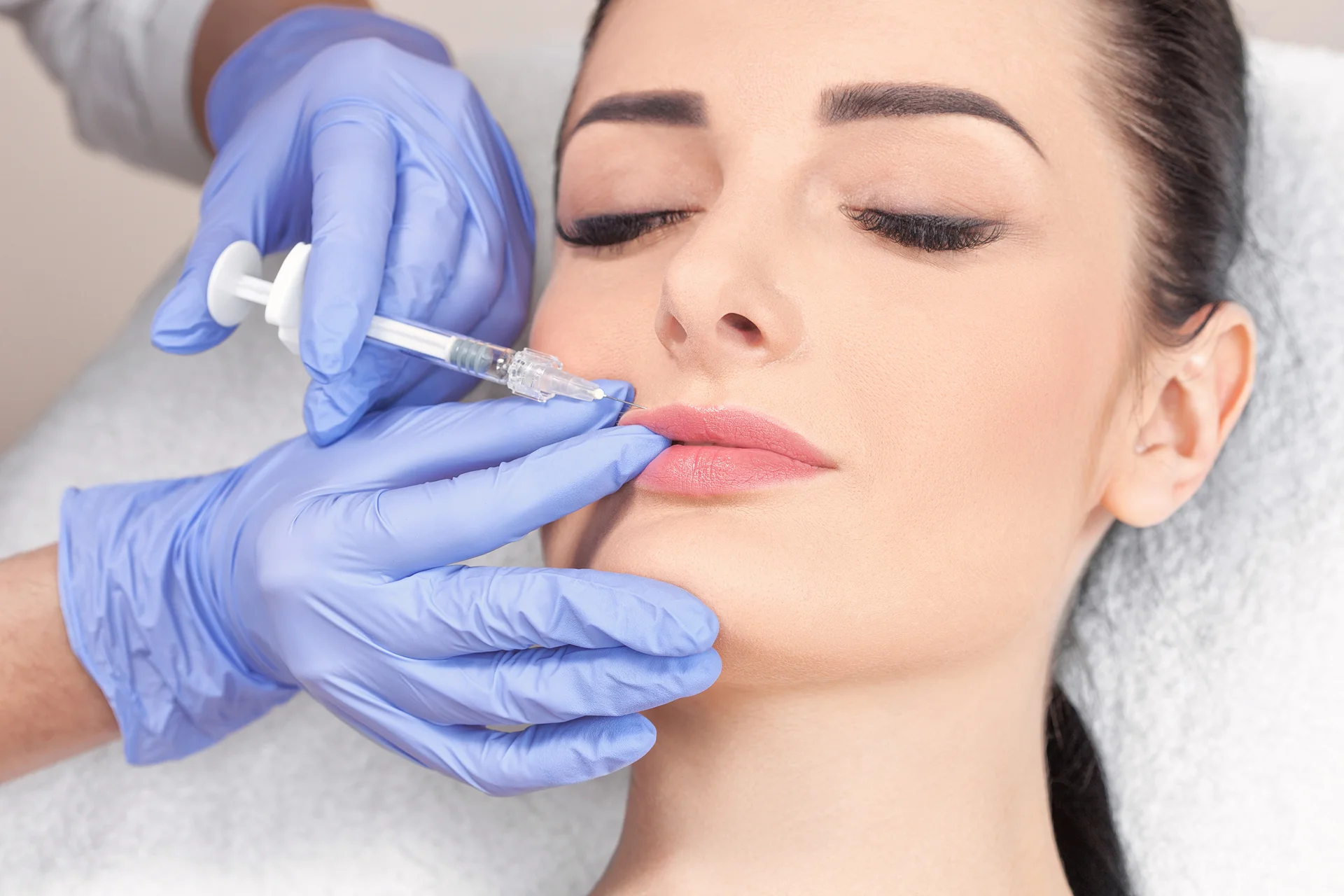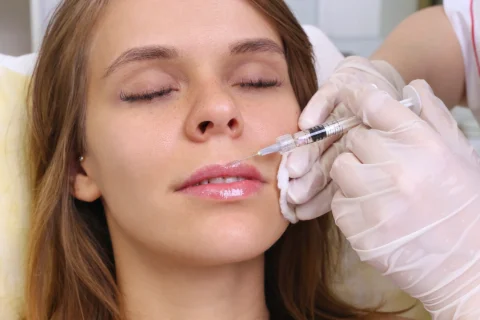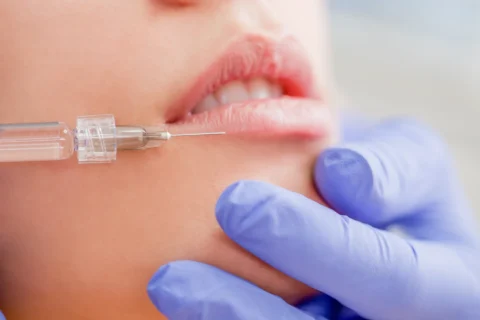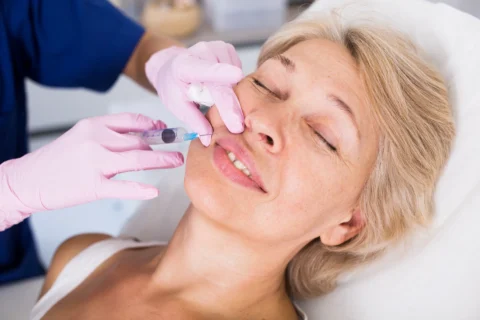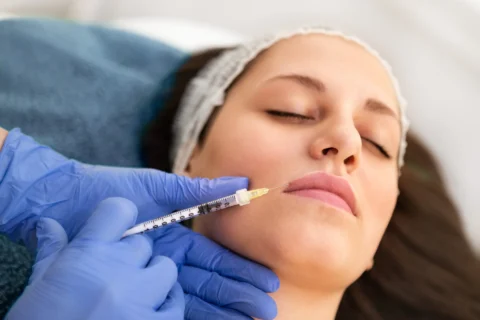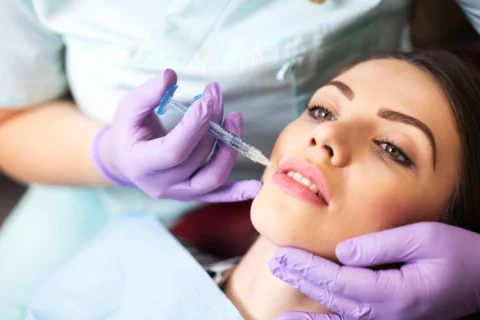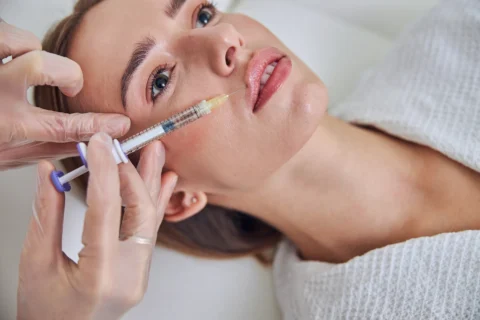While lip fillers might seem like a one-time magic trick, maintaining that perfect volume and shape requires an understanding of the rhythm and cycle of the treatment. So how often should you get lip fillers? Let’s delve into the fascinating journey of achieving and maintaining your dream lips. Get ready to kiss thin lips goodbye and say hello to a fuller, more youthful pout.
Lip Fillers – An Overview
Lip fillers, or dermal fillers, have become a popular cosmetic procedure, often used to address the natural loss of volume in the lips over time or simply to enhance one’s lip shape. These injectable fillers usually contain a gel-like substance designed to replenish or mimic naturally occurring elements in the skin. Some of the most common types of fillers include:
- Hyaluronic Acid Fillers: Fillers like Juvederm, Restylane, and Belotero are based on hyaluronic acid, a substance naturally present in the body. They can add volume, reduce wrinkles, and improve skin hydration.
- Calcium Hydroxylapatite Fillers: Products like Radiesse contain calcium hydroxylapatite, a substance found in bones. These fillers are thicker and last longer than hyaluronic acid fillers.
- Poly-L-lactic Acid Fillers: Known by the brand name Sculptra, these fillers stimulate your body to make more collagen, giving you a fuller facial appearance.
- Polymethylmethacrylate (PMMA) Fillers: PMMA fillers, like Bellafill, are used for deep wrinkles, folds, and furrows and provide permanent results.
Understanding the Lip Filler Procedure
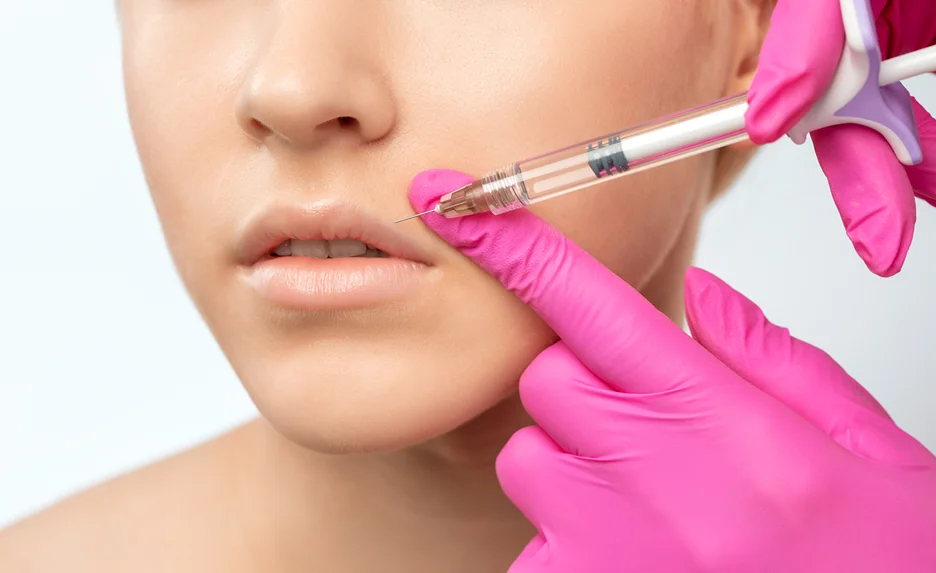
The lip filler procedure can include 6 simple steps. You should understand that although the actual injection process takes about 20-30 minutes, you should anticipate the full appointment, including the consultation and aftercare discussion, to take around an hour.
1. Consultation
The journey to fuller lips starts with a thorough consultation with a licensed lip injector or a board-certified plastic surgeon. During this session, they will discuss your aesthetic goals, evaluate your facial features, and determine the best approach to achieve your desired results. They will also talk you through the different types of fillers available and help you understand the procedure’s possible risks and benefits.
2. Preparation
On the day of the procedure, the aesthetician may start by applying a topical numbing cream to the lips to minimize any discomfort. In some cases, the filler itself might contain a local anesthetic, further reducing pain during the injections.
3. Marking
Using a marker, the provider will carefully delineate the areas of your lips that will receive the injections. This process ensures strategic placement of the filler, taking into account the natural contours of your lips and your desired outcomes.
4. Injection
The actual injection process begins once your lips are sufficiently numb and marked. Using a thin needle, your provider will inject the filler into the predetermined areas, carefully shaping and contouring your lips for a natural-looking result.
5. Massage
After the filler is injected, your provider may gently massage the treated area. This step helps distribute the filler evenly within your lips and smooth out any bumps.
6. Clean-up and Review
Once the procedure is complete, any markings will be cleaned off, and you’ll be able to review your results. Keep in mind that some swelling and redness are normal immediately after the treatment and will typically subside within a few days.
7. Aftercare Instructions
Finally, your provider will give you specific aftercare instructions to follow. These may include avoiding strenuous exercise, limiting sun exposure, and refraining from alcohol and certain medications that may increase the risk of bruising.
How Often Do You Have to Get Lip Fillers?
The Impact of Aging on Lip Filler Frequency
As we age, our body undergoes significant changes that affect our overall appearance, including the shape and fullness of our lips. Two main factors contribute to these changes:
1. Decline in Collagen Production: Collagen is a key structural protein in our skin that maintains its firmness and elasticity. As we age, our body’s collagen production naturally slows down, leading to thinner skin and reduced volume in areas like the lips. This decline begins as early as our mid-20s and accelerates in our late 40s and 50s. This means that as we get older, our lips may lose their natural fullness and develop fine lines and wrinkles.
2. Loss of Subcutaneous Fat: As part of the aging process, we also lose subcutaneous fat, the layer of fat directly underneath the skin. This loss contributes to the thinning and drooping of the lips over time.
Both these factors might lead to an increased desire for lip fillers as we age, to restore volume and smooth out fine lines. However, the impact of aging also influences how our bodies respond to lip fillers and, ultimately, how often we need to undergo the treatment.
Types of Fillers and Their Longevity
The longevity of the fillers is determined by the type of filler used. For instance, temporary fillers like Restylane Silk and Juvederm Ultra tend to metabolize faster in the body, requiring more frequent appointments. On the other hand, longer-lasting fillers like Juvederm Volbella may require less frequent appointments.
| Filler Type | Filler Name | Expected Longevity |
| Hyaluronic Acid Fillers | Restylane-L | 6-9 months |
| Hyaluronic Acid Fillers | Restylane Silk | 6-9 months |
| Hyaluronic Acid Fillers | Juvederm Ultra XC | 9-12 months |
| Hyaluronic Acid Fillers | Juvederm Ultra Plus XC | 9-12 months |
| Hyaluronic Acid Fillers | Juvederm Volbella | up to 12 months |
| Hyaluronic Acid Fillers | Juvederm Vollure | up to 18 months |
| Hyaluronic Acid Fillers | Juvederm Voluma | up to 24 months |
| Calcium Hydroxylapatite Fillers | Radiesse | 12-18 months |
| Poly-L-lactic Acid Fillers | Sculptra | up to 24 months |
| Polymethylmethacrylate (PMMA) Fillers | Bellafill | up to 24 months |
Lifestyle Factors that Impact Filler Longevity
Many people may not realize that lifestyle factors can influence the longevity of fillers. Here are a few lifestyle choices to consider:
- Smoking: Nicotine constricts blood vessels, affecting the oxygen and nutrient supply to the skin cells. This can accelerate the breakdown of fillers and decrease their longevity.
- Sun Exposure: Overexposure to the sun leads to the premature breakdown of collagen and elastin, the skin’s support structure, potentially diminishing the effects of fillers over time.
- Diet: Certain foods can cause inflammation in the body, speeding up the aging process and potentially reducing the lifespan of fillers.
- High-Intensity Workouts: Intense physical activity can increase the metabolic rate, which may cause the body to break down the filler material faster.
Individuals with these lifestyle habits might have to schedule more frequent lip filler appointments due to increased metabolic activity.
Lip Filler Aftercare
Taking care of your lips post-procedure is crucial in ensuring an optimal healing process and achieving the best results. Here are some tips for lip filler aftercare:
- Avoid Touching: Resist the urge to touch or massage the treated area for at least 24 hours after the procedure. This prevents the filler from moving around or creating uneven areas.
- Skip Makeup: For the first 24 hours, avoid applying lipstick or other makeup products on your lips. These can introduce bacteria to the injection sites, leading to infections.
- Stay Hydrated: Drinking plenty of water is essential, especially if your lip filler contains hyaluronic acid. This substance can attract and hold water, contributing to a plumper lip effect.
- Ice the Area: If you’re experiencing swelling or discomfort, applying an ice pack wrapped in a cloth to the area can help. Do this for 15 minutes on, then 15 minutes off for the first few hours after treatment.
- Limit Physical Activity: It’s best to refrain from strenuous exercise or activities for the first 24-48 hours. High-intensity activities can increase blood flow and potentially exacerbate swelling.
- Avoid Extreme Temperatures: Stay away from heat exposure, saunas, and sunbathing. Extreme heat can cause increased swelling and discomfort.
- Sleep Elevated: Try sleeping with your head elevated on pillows for the first few nights to help minimize swelling.
- Avoid Alcohol and Certain Medications: Avoid alcohol and blood-thinning medications like aspirin or ibuprofen for at least 24 hours before and after the procedure to minimize the risk of bruising and swelling.
- Don’t Panic Over Swelling: Swelling is common after a lip filler procedure. Don’t be alarmed if your lips look larger than you expected right after the treatment. The swelling should subside within a few days, revealing your true results.
Always remember that the specific aftercare instructions can vary depending on your individual circumstances and the type of filler used. It’s essential to follow the aftercare guidance provided by your treatment provider.
Achieve Your Desired Lip Volume and Maintain it with Regular Lip Filler Appointments at Ethos Spa
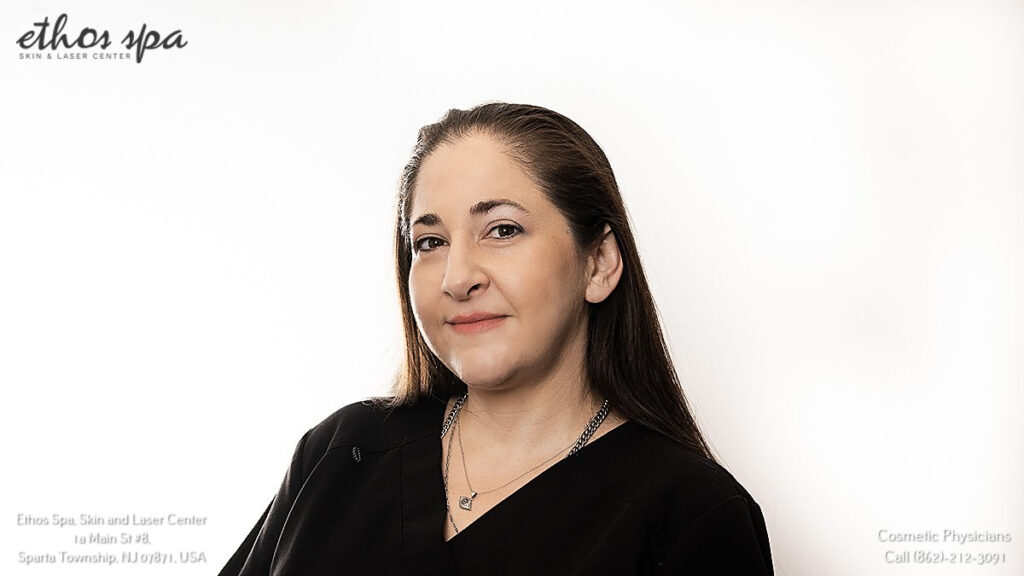
Lip filler treatments don’t just add volume and shape to your lips, they also help maintain youthful and plush appearance over time. However, keep in mind that these aren’t one-and-done procedures. Depending on the type of filler used and individual factors such as your metabolic rate and lifestyle choices, you might need to schedule your lip filler appointments every 6 to 18 months to ensure optimal and lasting results.
At Ethos Spa, we know that maintaining your desired look requires regular check-ups and professional advice. That’s why we offer a comprehensive lip filler program, which includes not only the application of top-quality hyaluronic acid-based fillers but also follow-up consultations to assess how your lips are adjusting to the fillers and when your next appointment should be.
Our team of highly-trained and caring aesthetic professionals will work with you to develop a customized treatment plan, ensuring your lips always look their best. Book your consultation at Ethos Spa today and embark on a journey towards achieving and maintaining beautifully enhanced lips.

